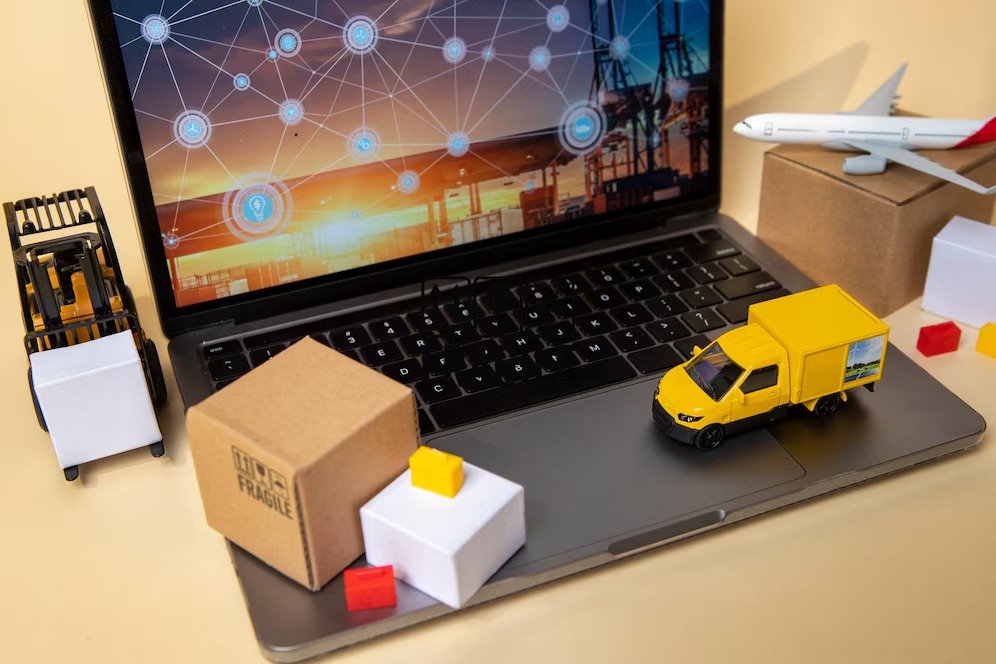
Managing Returns & Refunds: Best Practices for Retailers
Returns and refunds are part of retail, but they can create opportunities. A smooth return process encourages customers to return and builds your brand’s reputation. It also reduces financial losses—what a win-win!
By creating fair refund policies and improving return logistics, you set the stage for long-term success.
This guide is your roadmap. It shares proven strategies to handle returns while enhancing customer satisfaction and profits.
1. Understanding the Impact of Returns on Retail

a) Why Customers Return Products
- Incorrect Size or Fit: Common in apparel and footwear industries.
- Damaged or Defective Items: Products arriving broken or malfunctioning.
- Buyer’s Remorse: Customers change their minds post-purchase.
- Mismatched Expectations: Product doesn’t match description or images.
- Late Delivery: Customers refuse or return items due to shipping delays.
- Multiple Sizes Ordered: Shoppers buy multiple sizes intending to return the extras.
b) The Cost of Returns for Retailers
- Restocking & Handling Costs: Processing and repackaging returned items.
- Shipping Expenses: Return shipping costs impact margins.
- Fraudulent Returns: Customers abuse return policies (e.g., wardrobing).
- Lost Revenue: Returns reduce overall profitability and inventory availability.
- Operational Challenges: Increased workload for warehouse and customer service teams.
- Environmental Impact: Managing excess returns adds to waste and carbon emissions.
2. Creating a Customer-Friendly Return Policy
a) Essential Elements of a Retail Refund Policy
A well-structured return policy should be:
- Clear & Concise: Avoid jargon and legal complexity.
- Easily Accessible: Display on product pages, checkout, and FAQs.
- Fair & Flexible: Strike a balance between business protection and customer convenience.
- Time-Bound: Specify return timeframes (e.g., 30-day or 60-day returns).
- Condition-Based: Define acceptable return conditions (unused, tags attached, original packaging).
- Sustainability-Focused: Encourage eco-friendly return options when possible.
b) Offering Different Refund & Exchange Options
- Full Refunds: Direct refund to the customer’s original payment method.
- Store Credit: Encourages repurchase instead of refunding cash.
- Product Exchanges: Reduce lost revenue by offering replacements.
- Partial Refunds: For opened or slightly used items.
- Final Sale Items: Clearly label non-returnable products.
c) Preventing Return Fraud
- Implement Return Tracking: Use fraud detection tools.
- Require Proof of Purchase: Avoid returns without valid receipts.
- Restrict Excessive Returns: Flag repeat returners for review.
- Use Serial Number Verification: Prevent false claims on electronics.
- Leverage AI Fraud Detection: Identify and mitigate fraudulent return patterns.
3. Reducing Return Rates Through Prevention

a) Improving Product Descriptions & Images
- Detailed Specifications: Include size charts, dimensions, and material details.
- 360° Images & Videos: Provide accurate product views.
- Customer Reviews & Q&A Sections: Help set real expectations.
- AI-Powered Fit Tools: Use virtual try-ons or size recommendations.
b) Enhancing Quality Control & Packaging
- Pre-Shipment Inspections: Check products before dispatch.
- Durable Packaging: Reduce damage-related returns.
- Tamper-proof Seals: Deter fraudulent returns.
- Smart Packaging: Use QR codes to provide handling instructions and authenticity verification.
c) Offering Virtual Assistance & Live Support
- Chatbots & AI Assistants: Guide customers pre-purchase.
- Live Chat Support: Answer real-time inquiries.
- Post-Purchase Guidance: Provide product care instructions.
- Augmented Reality (AR) Shopping Tools: Help customers make informed choices.
4. Streamlining the Returns Process
a) Making Returns Easy for Customers
- Prepaid Return Labels: Simplify the process with QR codes or printed labels.
- Multiple Return Channels: Accept returns in-store, by mail, or via drop-off points.
- Customer Self-Service Portals: Enable online return requests and tracking.
b) Automating Returns Processing
- Reverse Logistics Software: Optimize return flow.
- Barcode & RFID Tracking: Improve accuracy and speed.
- Automated Refund Approvals: Reduce manual verification time.
- AI-Powered Sorting: Categorize returns for resale, refurbishment, or recycling.
c) Speeding Up Refunds & Exchanges
- Instant Refunds for Store Credit: Encourage repurchases.
- Same-Day Exchange Dispatch: Improve turnaround time.
- AI-Based Return Decisioning: Approve non-fraudulent returns faster.
- Integrated Payment Processing: Ensure seamless and quick refunds.
5. Managing Return Logistics & Reverse Supply Chain

a) Efficient Handling of Returned Inventory
- Sort Returns by Condition: Restock, refurbish, recycle, or dispose of.
- Repackage & Resell: Reduce waste by reselling like-new items.
- Liquidate Overstock Returns: Sell through discount platforms.
b) Using Third-Party Logistics (3PL) Providers
- Outsource Return Warehousing: Reduce processing workload.
- Regional Return Centers: Speed up processing.
- Integration with Carriers: Automate return tracking.
c) Sustainable Return Solutions
- Offer Green Returns: Encourage eco-friendly disposal.
- Reuse & Recycle Returned Goods: Reduce landfill waste.
- Encourage Returnless Refunds: Save logistics costs on low-value items.
- Partner with Eco-Friendly Distributors: Minimize waste and maximise sustainability efforts.
d) Leveraging Technology in Reverse Logistics
- AI-Powered Return Insights: Predict trends and adjust policies accordingly.
- Blockchain for Returns: Ensure transparency and traceability in the return process.
6. Enhancing Customer Experience Through Returns
a) Proactive Communication & Transparency
- Email & SMS Updates: Keep customers informed.
- Live Chat & AI Support: Answer return-related queries quickly.
- Customer Feedback Collection: Identify improvement areas.
b) Turning Returns Into Sales Opportunities
- Personalised Offers on Return Pages: Provide discount codes.
- Upselling During Exchange Process: Encourage premium upgrades.
- Loyalty Points for Returning Customers: Reward repurchases.
c) Measuring Customer Satisfaction Post-Return
- Net Promoter Score (NPS) Surveys: Gauge sentiment.
- Return Reason Analysis: Improve policies.
- Follow-Up Emails: Maintain customer engagement.
d) Building Long-Term Customer Trust
- Hassle-Free Return Experience: Ensure customers feel valued.
- Customer Loyalty Programs: Reward customers for fair return behavior.
Conclusion
An effective returns and refunds strategy balances customer satisfaction with profitability.
Retailers can turn returns into triumphs with customer-friendly policies and tech-savvy tracking. They optimise logistics and track trends. This helps keep return rates low and experiences smooth.
Investing in an efficient returns process isn’t just wise; it’s savvy. This strategy nurtures brand loyalty while reducing financial risks. A well-designed return approach turns problems into opportunities. This helps create lasting success in retail.


